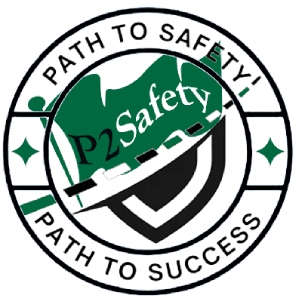CSP 25 Flashcards

1. SCBA (Supplied Air System)
Self-Contained Breathing Apparatus
Rule: ANY TIME concentrations exceed or are equal to a chemical's IDLH we must use a supplied air system (SCBA).
1910.134 - Respiratory protection.

2. Protection Factors (Air Purifying PPE)
Protection Factor (PF) = (the concentration of harmful substances on the outside of the mask) / (concentration under mask) = 1 / Penetration. the Assigned Protection Factors (APF) - the decrease of the concentration of harmful substances in the inhaled air, which (is expected) to be provided with timely and proper use of a certified respirator of certain types (design) by taught and trained workers (after individual selection with a tight-fitting mask and fit testing), when the employer performs an effective respiratory protective device programme.
Half Face: 10
Full Face: 50
PAPR: 1000
Airline: 1000
SCBA: 10,000

3. PPE Levels
OSHA defines four levels of full-body HazMat protection. Level A is the most protective and Level D is the least protective. The regulations related to HazMat PPE levels are found under §1910.120 Appendix B.
A. A: Most protection; FULL BODY SUIT includes SCBA
B. B: All types of protection; no full body suit; does include supplied air/SCBA
C. C: All types of protection, but no supplied air; does include full or half face respiratory protection
D. D: Work clothes; no chemical protective clothing; can have some sort of filter/mask

4. Risk
Risk is often expressed in terms of a combination of the consequences of an event (including changes in circumstances) and the associated likelihood of occurrence or Probability AND severity of a negative event

5. Risk Assessment
Estimation of the degree of risk, Risk assessment is the process of analysing potential events that may result in the loss of an asset, loan, or investment.

6. Environmental Assessments
Environmental assessment is the process by which the consequences and effects of natural processes and human activities upon the environment are estimated, evaluated or predicted1. Assessments can include within their scope ways to minimise, mitigate, or eliminate those effects, and even to compensate for their impact1,2. Usually done in conjunction with real estate transactions.
Phase I assessment - Identifies environmental liabilities.
Phase II Assessment

7. Residual Risk
The risk that remains after preventative measures have been taken. Residual risk = inherent risk - impact of risk controls

8. BLEVE
Boiling Liquid Expanding Vapor Explosion. A boiling liquid expanding vapor explosion is an explosion caused by the rupture of a vessel containing a pressurized liquid that has reached temperature above its boiling point.

9. Minimum Oxygen Level Required to Wear an Air Purifying Respirator
19.5% Oxygen Level. The Occupational Safety and Health Administration, OSHA, determined the optimal range of oxygen in the air for humans runs between 19.5 and 23.5 percent. Based on OSHA guidelines, a confined space is considered to have safe oxygen levels if readings are between 20.8-21 percent, while a space with readings of less than 19.5 percent are considered to be oxygen deficient.

10. Visible Wavelengths on the EM Spectrum
400-780 nm. The visible light spectrum is the segment of the electromagnetic spectrum that the human eye can view. More simply, this range of wavelengths is called visible light. Typically, the human eye can detect wavelengths from 380 to 700 nanometres.

11. Maximum Hose Length for Airline Respirator
300 feet = Regarding airline (Type-C) respirators, NIOSH states the maximum allowable length of hose to be used from the Point of Attachment (POA) is 300 feet. The POA is the location on an air filteration system that contains the air pressure regulator, the pressure gauge, safety relief valve and outlet manifold with quick connect couplings.

12. Leading vs Lagging Indicators
Lagging indicators are reactive in nature. They measure the effectiveness of a safety program after the facts. Typical lagging indicators include the number of incidents, injuries, days away from work (DAFW), etc. In contrast, leading indicators are proactive in nature

13. Air Pollution Modelling
Air pollution modelling (APM) is being developed and used to better understand, investigate, assess, and regulate the quality of the atmospheric environment and the distribution of toxic pollutants which are often used in ecotoxicology.
Mathematical prediction of ambient concentrations of air pollution
Dispersion modelling

14. Air Pollution Assessments
Assessments of the health risk from air pollution estimate and communicate the impact of exposure to air pollution on the population’s health. Such assessments may also include the impact of changes in air quality resulting from air quality improvement measures (WHO, 2016).
- Smoke Reading
- Stack Testing
- Area Monitoring

15. Catastrophic Release
Major, uncontrolled emission, fire or explosion involving one or more highly hazardous chemicals that presents danger to employees in the workplaceMathematical prediction of ambient concentrations of air pollution Dispersion modelling

16. Process Safety Information
- Requirement of Process Safety Management
- PSM refers to federal requirements for processes that use highly hazardous chemicals.
Includes:
- Toxicity
- PEL
- Physical Data
- Reactivity Data
- Corrosivity data
- Thermal and chemical stability data

17. Process Technology Information
- Block flow diagram
- Shows flow of process
- Process chemistry
- Safe limits for temperatures, pressures, flows
- Evaluation of deviation consequences

18. Controlling Electrical Hazards
- Locate equipment away from people and hazardous material
- Physical controls
- Shielding
- Proper wire size
- Overcurrent devices
- Fuses, circuit breakers

19. Ground Fault Circuit Interrupter (GFCI)
A GFCI (Ground Fault Circuit Interrupter) is an automatic device that offers personal protection against lethal electrical shock or electrocution.
Detects difference in current between 2 conductors.
Shuts off circuit of if there is a difference

20. Static Electricity
Static electricity is an imbalance of electric charges within or on the surface of a material or between materials. The charge remains until it can move away by means of an electric current or electrical discharge.
- Electrical charges build up on the surface of materials
- Charge discharges as arc through the air
- Builds up in dry air
- Moving fluids belts, sliding materials
- Controlled through GROUNDING and BONDING

21. Grounding
Electricity connecting to a piece of equipment to ground. Static grounding prevents the build-up of static electricity reducing the chance of fires or explosions where hazardous materials are handled. Lightning protection grounding helps protect structures and equipment from direct strikes.

22. ACGIH
the American Conference of Governmental Industrial Hygienists (ACGIH)

23. Common Air Permitting Terms (NSPS, PSD, BDAT, MACT)
NSPS: New Source Performance Standards
PSD: Prevention of Significant Deterioration
BDAT: Best Developed Available Technology
MACT: Maximum Achievable Control Technology

24. Pitot Tube
A pitot tube (pitot probe) measures fluid flow velocity. It was invented by a French engineer, Henri Pitot, in the early 18th century, and was modified to its modern form in the mid-19th century by a French scientist, Henry Darcy. An open-ended right-angled tube pointing into the flow of a fluid and used to measure pressure

25. Adiabatic Rate
In thermodynamics, an adiabatic process is a type of thermodynamic process that occurs without transferring heat or mass between the thermodynamic system and its environment. In dry air, the adiabatic lapse rate is 9.8 °C/km (5.4 °F per 1,000 ft). How we would expect gas to behave
- Increase in pressure in gases = temp rise
- Decrease in pressure in gases = temp lower
- Higher altitudes = less pressure = lower temp




